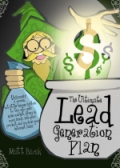Increase Your Returns With Opt-in Email Advertising
Opt-in, or permission-based e-mail is a proven Internet marketing technique, yielding far greater results than "spam" email. An opt-in campaign can be created using a purchased email list, or you can grow your own list organically through techniques such as customer sign-ups, free offers or discounts. Although there may be some additional expense in purchasing an "opt-in" list, that list will contain consumers who are much more likely to be interested in your offering. In addition, you eliminate the risks of spamming, which may include potential fines under the "CAN-SPAM" act, or canceling of your account by your ISP.
The amount of marketing that takes place online is increasing exponentially, leaving marketers scrambling for ways to get noticed. Email marketing has become a sophisticated field, consumers are getting more savvy, and regulations are starting to govern what you can and cannot do. The days of buying a list of a million email addresses and blanketing the Internet are over. "Spam" never was very effective, and it's even less so now. Click-through rates for unsolicited email are abysmally low, you are likely to receive angry responses from consumers, your ISP may shut you down if too many people complain, and you may even be subject to fines under the "CAN-SPAM" Act. The most successful email marketers are now using opt-in email advertising techniques.
Opt-in email marketing, also known as permission-based marketing, involves sending your message to recipients which have expressly stated a desire to receive information about products or services related to your particular offer. In many cases, consumers agree to receive advertisements related to something that interests them, in exchange for something of value, such as a discount, free gift, or informational newsletter.
There are two ways to go about permission-based marketing; you can build your own opt-in list, or you can purchase one. Either way is effective. Targeted, opt-in email messages receive response rates of anywhere between five to 15 percent, while conventional banner ads usually yield only about one percent. Spam yields only a tiny fraction of a percent. Internet entrepreneurs who use personalized messages always get better results.
Alternately, you can create your own opt-in list. The most obvious place to start is with your existing customers. Offer them a discount on future purchases in exchange for agreeing to receive your promotional messages. Also, create something of value to draw in new customers. For example, suppose you sell rare coins on the Internet. Create a well-written weekly newsletter that coin collectors will enjoy reading. Offer free subscriptions for anyone who agrees to receive your promotional email marketing messages. Don't stop there, though. Consider every point where there is customer interaction as an opportunity to sign up a new member to your list. Provide an opportunity to opt-in with customer orders. If you have a brick-and-mortar store, ask for email addresses at the point of checkout.
Growing your own opt-in email list will take longer, but your results will be excellent. Some marketers optimize their results by using both techniques. Creating your own opt-in list does require a bit of technology. If you have a very small list, you can start out simply by adding each subsequent subscriber to the "BCC" list on your email client, but this will get cumbersome as your list grows. You will want to eventually invest in an email list management program. This is a piece of software that helps you to manage your email list, and it will include features such as the ability to handle bouncebacks, automate the subscribe and unsubscribe function, and personalize each message. The software should also have a tracking and reporting function, to allow you to keep track of your success rates and other important metrics.
If you choose to buy an opt-in list, there are many quality vendors that you can work with. Do a little research ahead of time, and find out how they acquire their email addresses: do they offer an informational newsletter or something of value in exchange for permission to receive ads? Ask about frequency--an overworked opt-in list is just as useless as a spam list. You will do better with a list that is highly targeted. Find a list vendor who can provide you with email addresses of people who have indicated interest specifically in what you have to offer. The list may cost a little more, but your returns will pay off in the end.
The amount of marketing that takes place online is increasing exponentially, leaving marketers scrambling for ways to get noticed. Email marketing has become a sophisticated field, consumers are getting more savvy, and regulations are starting to govern what you can and cannot do. The days of buying a list of a million email addresses and blanketing the Internet are over. "Spam" never was very effective, and it's even less so now. Click-through rates for unsolicited email are abysmally low, you are likely to receive angry responses from consumers, your ISP may shut you down if too many people complain, and you may even be subject to fines under the "CAN-SPAM" Act. The most successful email marketers are now using opt-in email advertising techniques.
Opt-in email marketing, also known as permission-based marketing, involves sending your message to recipients which have expressly stated a desire to receive information about products or services related to your particular offer. In many cases, consumers agree to receive advertisements related to something that interests them, in exchange for something of value, such as a discount, free gift, or informational newsletter.
There are two ways to go about permission-based marketing; you can build your own opt-in list, or you can purchase one. Either way is effective. Targeted, opt-in email messages receive response rates of anywhere between five to 15 percent, while conventional banner ads usually yield only about one percent. Spam yields only a tiny fraction of a percent. Internet entrepreneurs who use personalized messages always get better results.
Alternately, you can create your own opt-in list. The most obvious place to start is with your existing customers. Offer them a discount on future purchases in exchange for agreeing to receive your promotional messages. Also, create something of value to draw in new customers. For example, suppose you sell rare coins on the Internet. Create a well-written weekly newsletter that coin collectors will enjoy reading. Offer free subscriptions for anyone who agrees to receive your promotional email marketing messages. Don't stop there, though. Consider every point where there is customer interaction as an opportunity to sign up a new member to your list. Provide an opportunity to opt-in with customer orders. If you have a brick-and-mortar store, ask for email addresses at the point of checkout.
Growing your own opt-in email list will take longer, but your results will be excellent. Some marketers optimize their results by using both techniques. Creating your own opt-in list does require a bit of technology. If you have a very small list, you can start out simply by adding each subsequent subscriber to the "BCC" list on your email client, but this will get cumbersome as your list grows. You will want to eventually invest in an email list management program. This is a piece of software that helps you to manage your email list, and it will include features such as the ability to handle bouncebacks, automate the subscribe and unsubscribe function, and personalize each message. The software should also have a tracking and reporting function, to allow you to keep track of your success rates and other important metrics.
If you choose to buy an opt-in list, there are many quality vendors that you can work with. Do a little research ahead of time, and find out how they acquire their email addresses: do they offer an informational newsletter or something of value in exchange for permission to receive ads? Ask about frequency--an overworked opt-in list is just as useless as a spam list. You will do better with a list that is highly targeted. Find a list vendor who can provide you with email addresses of people who have indicated interest specifically in what you have to offer. The list may cost a little more, but your returns will pay off in the end.





















































































<< Home